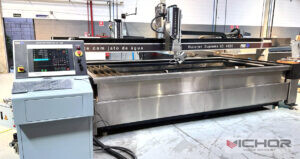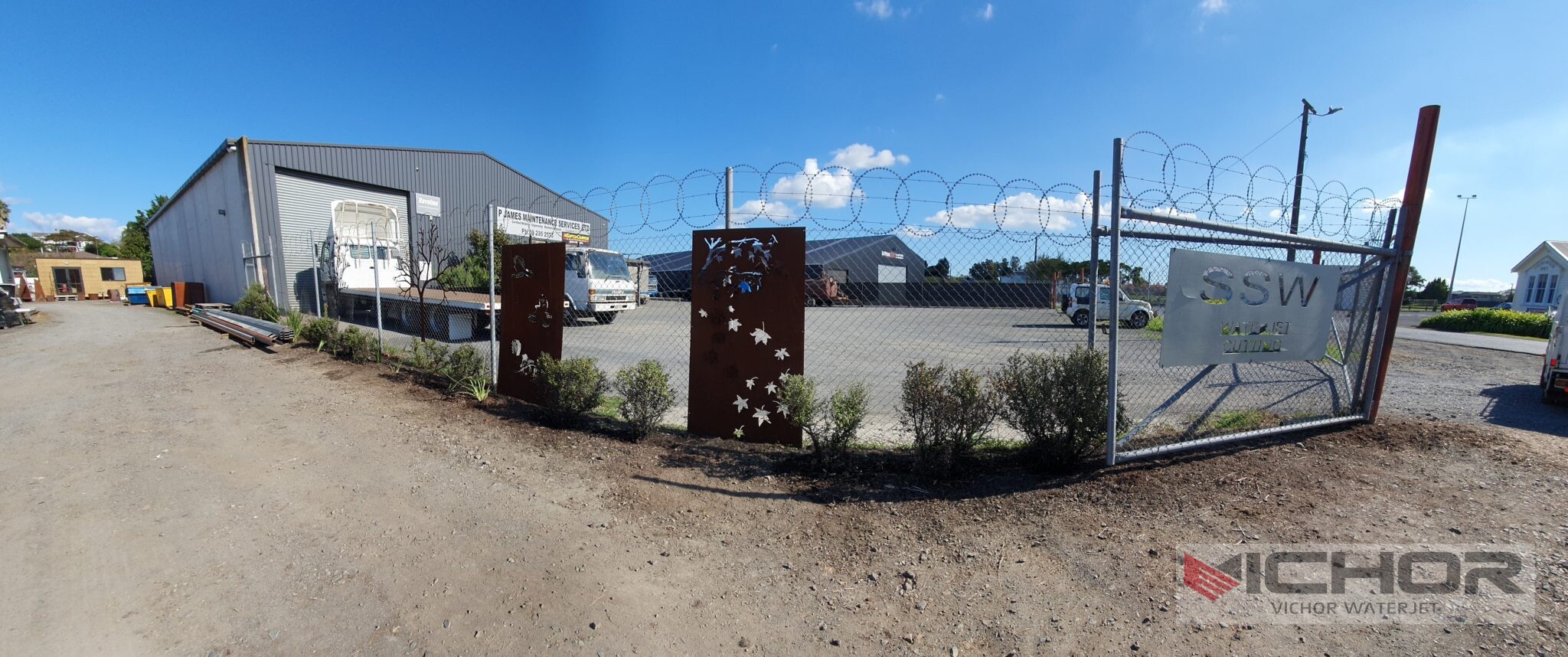
Water Jet CNC Cutter: Transforming Modern Manufacturing with Precision
Imagine a cutting tool so versatile that it slices through metal, stone, and glass with the ease of a hot knife through butter—yet without generating heat. This isn’t science fiction; it’s the reality of the water jet CNC cutter. In today’s fast-paced industrial landscape, efficiency and precision are paramount, and the water jet CNC cutter stands out as a game-changer. Combining computer numerical control (CNC) technology with high-pressure water streams, this equipment delivers unmatched accuracy and flexibility. Whether you’re in aerospace, automotive, or artisanal crafts, understanding how a water jet CNC cutter works and its benefits can revolutionize your operations. This article dives deep into the mechanics, advantages, applications, and more, providing a comprehensive look at why this tool is essential for modern fabrication. By the end, you’ll see why the water jet CNC cutter is not just another machine but a pivotal innovation in manufacturing.
What is a Water Jet CNC Cutter?
A water jet CNC cutter is a computer-controlled machine that uses a high-pressure stream of water, often mixed with abrasive materials, to cut a wide variety of substances. Unlike traditional cutting methods that rely on heat or physical blades, this system employs water accelerated to extreme velocities—sometimes exceeding Mach 3—to erode materials with pinpoint accuracy. The “CNC” component refers to the computerized guidance that directs the water jet along predefined paths, ensuring consistent, repeatable cuts. This technology is celebrated for its ability to handle materials that are sensitive to heat, such as plastics or composites, without altering their properties. Essentially, a water jet CNC cutter acts like a digital sculptor, transforming raw materials into intricate components with minimal waste. Its adaptability makes it a cornerstone in industries where precision and material integrity are non-negotiable. From creating detailed architectural elements to producing machine parts, the water jet CNC cutter offers a cold-cutting solution that minimizes environmental impact and maximizes efficiency.
How Does a Water Jet CNC Cutter Work?
The operation of a water jet CNC cutter begins with a high-pressure pump that intensifies water pressure to levels ranging from 60,000 to 90,000 psi. This pressurized water is then forced through a small nozzle, often made of durable materials like sapphire or diamond, to create a focused, high-velocity stream. In many cases, an abrasive substance—such as garnet—is introduced into the stream to enhance cutting power, especially for harder materials like metals or ceramics. The CNC system plays a critical role here: it uses digital designs (e.g., CAD files) to control the movement of the nozzle along multiple axes, allowing for complex shapes and patterns. As the water jet CNC cutter moves, the stream precisely erodes the material, resulting in clean edges without burrs or thermal distortion. This process is remarkably efficient, as it doesn’t produce hazardous fumes or require coolants, making it a greener alternative. Moreover, the lack of heat-affected zones means materials retain their structural integrity, reducing the need for post-processing. Overall, the synergy between high-pressure hydraulics and computerized control makes the water jet CNC cutter a reliable tool for demanding applications.
Key Advantages of Using a Water Jet CNC Cutter
One of the most significant benefits of a water jet CNC cutter is its versatility. It can cut virtually any material—from soft foams and rubber to tough alloys and stone—without the limitations seen in laser or plasma cutters. This adaptability stems from the cold-cutting nature of the water jet, which prevents thermal damage, warping, or hardening of materials. Additionally, the water jet CNC cutter excels in precision, achieving tolerances as tight as ±0.1 mm, which is crucial for industries like aerospace and medical device manufacturing. Another advantage is environmental friendliness; the process uses water and natural abrasives, generating minimal waste and no toxic byproducts. Compared to other methods, a water jet CNC cutter also reduces operational costs over time, as it requires less energy and eliminates the need for secondary finishing steps. Safety is another highlight: without extreme heat or sparks, the risk of fires or explosions is low. Furthermore, the water jet CNC cutter supports rapid prototyping and customization, enabling businesses to respond quickly to market demands. In summary, this technology offers a blend of efficiency, precision, and sustainability that is hard to match.
Common Applications of Water Jet CNC Cutters
The water jet CNC cutter finds applications across diverse sectors due to its flexibility and precision. In the automotive industry, it is used to cut gaskets, interior panels, and even engine components from materials like aluminum and composites. The aerospace sector relies on water jet CNC cutters for shaping turbine blades and other critical parts from heat-sensitive alloys, ensuring structural integrity. Architecture and construction benefit from its ability to intricately cut stone, tiles, and glass for decorative elements and functional structures. Art and design professionals use water jet CNC cutters to create detailed sculptures, signage, and custom furniture from materials such as wood, acrylic, and metal. Even the food industry employs similar principles for portioning products without contamination, though this typically uses pure water jets without abrasives. The medical field utilizes water jet CNC cutters for producing implants and devices from biocompatible materials, where precision is life-saving. This wide-ranging applicability underscores how the water jet CNC cutter bridges gaps between industries, fostering innovation and efficiency.
Types of Water Jet CNC Cutters
Water jet CNC cutters generally fall into two main categories: pure water jet cutters and abrasive water jet cutters. Pure water jet cutters use only high-pressure water and are ideal for softer materials like foam, rubber, or food products. They are known for their clean cuts and minimal material loss, making them suitable for industries where hygiene and delicacy are priorities. On the other hand, abrasive water jet cutters incorporate garnet or other abrasives into the stream, enabling them to tackle hard materials such as steel, titanium, ceramics, and stone. This type is more common in industrial settings due to its robustness. Additionally, water jet CNC cutters can be classified based on their configuration, such as gantry-style systems for large-scale projects or robotic arms for complex, three-dimensional cuts. Some advanced models feature multi-head setups, allowing simultaneous cutting of multiple pieces, which boosts productivity. Understanding these types helps businesses select the right water jet CNC cutter for their specific needs, whether for heavy-duty manufacturing or fine artistic work.
Maintenance and Safety Tips for Water Jet CNC Cutters
Proper maintenance of a water jet CNC cutter is essential for longevity and performance. Regularly inspect the high-pressure pump, seals, and nozzles for wear, as these components are subject to extreme conditions. Replacing abrasive materials and filters periodically prevents clogs and ensures consistent cut quality. It’s also crucial to monitor water quality; using deionized water can reduce mineral buildup and corrosion. Safety-wise, operators should wear protective gear, including goggles and gloves, to shield against high-pressure streams and flying debris. Implementing emergency stop mechanisms and routine training on CNC software reduces the risk of accidents. Additionally, keeping the work area clean and dry prevents slips and falls. By adhering to these practices, users can maximize the efficiency and lifespan of their water jet CNC cutter while maintaining a safe environment.

Future Trends in Water Jet CNC Cutter Technology
The evolution of water jet CNC cutter technology is leaning toward greater automation and intelligence. Integration with IoT (Internet of Things) and AI allows for real-time monitoring and predictive maintenance, minimizing downtime. Advances in nozzle design and pump efficiency are making water jet CNC cutters faster and more energy-efficient. There’s also a growing emphasis on sustainability, with research focused on recycling water and abrasives to reduce waste. As additive manufacturing gains traction, hybrid systems combining water jet cutting with 3D printing are emerging, enabling more complex fabrication processes. These trends promise to make the water jet CNC cutter even more indispensable in the factories of the future.
FAQs About Water Jet CNC Cutters
Q1: What materials can a water jet CNC cutter handle?
A1: A water jet CNC cutter can cut a wide range of materials, including metals (like steel and aluminum), stone, glass, ceramics, plastics, composites, and even rubber. Its versatility makes it suitable for various industries.
Q2: How accurate is a water jet CNC cutter?
A2: The accuracy of a water jet CNC cutter is typically within ±0.1 mm, allowing for high-precision cuts. This level of precision is maintained across complex shapes and patterns.
Q3: Is a water jet CNC cutter environmentally friendly?
A3: Yes, it is considered environmentally friendly because it uses water and natural abrasives, produces no hazardous fumes, and generates minimal waste. Water recycling systems can further enhance its sustainability.
Q4: What are the operating costs associated with a water jet CNC cutter?
A4: Operating costs include electricity for the pump, water, abrasive materials, and maintenance. However, these are often offset by reduced need for secondary processing and longer tool life compared to thermal cutting methods.
Q5: Can a water jet CNC cutter be used for 3D cutting?
A5: While traditional water jet CNC cutters are primarily for 2D cutting, advanced models with tilting heads or robotic arms can perform 3D cuts on complex surfaces, expanding their application scope.
In conclusion, the water jet CNC cutter is a transformative tool that combines precision, versatility, and sustainability. By understanding its workings and benefits, businesses can harness its potential to stay competitive in a dynamic market.
continue reading
Related Posts
- 1696 words8.5 min read
- 1991 words10 min read



